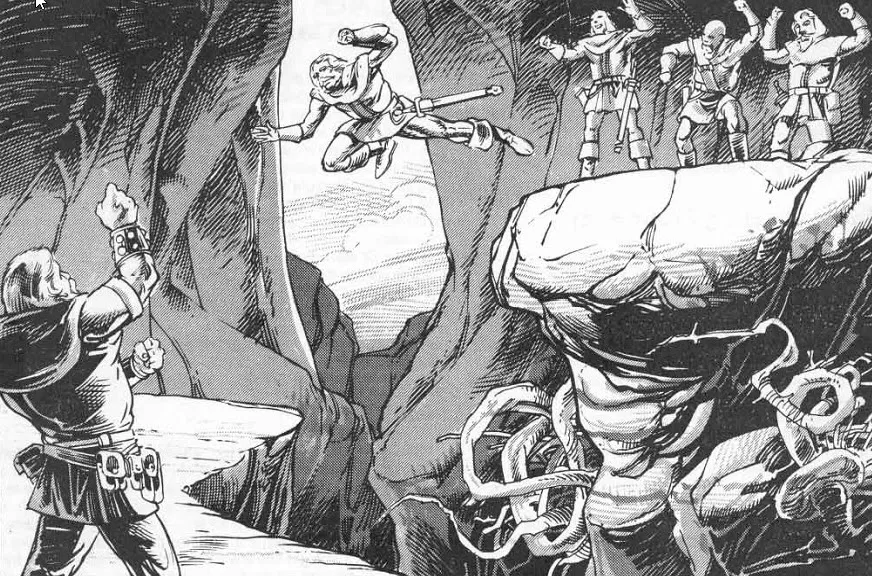
Underground obstacles such as chasms and pits are also frequently encountered by subterranean explorers. Occasionally, a repugnant monster such as a black pudding can be avoided if a character simply jumps over it. Characters of all classes have a limited ability to jump across obstacles that get in the way.
A running broad jump requires a 20-foot head start, and all jumps require only one segment of time. Unlike acrobats, however, other characters cannot attempt to jump backward or leap in an extended position. Use the following table and jumping modifiers to determine the distance a character can jump.
| Standing Broad | Running Broad Jump | |
| Character Level | Jump | Jump |
| 1-4 | 1d4 + 1ft | 1d4 + 5ft |
| 5-7 | 1d4 + 2ft | 1d4 + 6ft |
| 8-12 | 1d6 + 2ft | 1d6 + 5ft |
| 13-16 | 1d6 + 3ft | 1d6 + 6ft |
| 17-18 | 1d6 + 4ft | 1d6 + 9ft |
| 19+ | 1d8+ 6ft | 1d8+12ft |
Juan' Suggestion Table for jumping relative to level, standing vs running
Jumping Modifiers
The following factors reduce the distance that a character can jump. In no case can modifiers shorten a jump to less than two feet. Encumbrance: Unencumbered characters and characters carrying normal gear have no penalties to their jumping abilities. Characters carrying heavy gear subtract one foot from the distance of their jumps; characters with very heavy gear subtract two feet from their jumping distance, and encumbered characters subtract four feet. Race: Humans, elves, and half-orcs suffer no racial penalty on a jump. Halflings must subtract one foot from their total distance, and dwarves and gnomes must subtract two feet.






